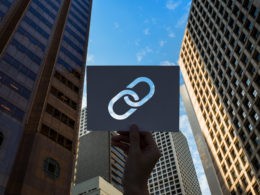Cloud, or infrastructure monitoring, is a combination of methods and tools IT experts use to monitor, analyze and manage the organization’s IT infrastructure. It should go without saying that using the wrong IM tool can hold back productivity, especially if the tool doesn’t focus on improving workflows or operational efficiency.
When it comes to monitoring the cloud IT infrastructure, you can do it manually or automatically, or with a mixed hands-on approach coupled with the right monitoring technologies. There are many reasons you need to monitor your IT infrastructure in order to ensure operational efficiency and cost savings, as well as infrastructure security and business continuity.
Let’s take a closer look at cloud monitoring and how to do it right. Here’s what you should know.
Types of Cloud Monitoring
Cloud monitoring is an all-encompassing term used to describe the tools and tactics you use to monitor your cloud-based IT infrastructure. It’s important to note that this infrastructure is divided into several key pillars. The need to achieve optimal infrastructure performance and to ensure everything is working together as intended has created several key types of cloud monitoring.
These key types include:
- Website monitoring. This process monitors the cloud resources used for website hosting, and provides insight into the site’s availability, traffic, resource use and various processes.
- Database monitoring. Businesses can benefit from critical cloud monitoring deliverables by analyzing the availability and usage of cloud database resources. Database monitoring is extremely useful for security analysis and logging access requests, for example.
- Cloud storage monitoring. Allows businesses to monitor storage resources and applications, databases and virtual machine processes, providing useful insights on apps, users and storage availability.
- Virtual machine monitoring. Monitors the use and resource distribution of each virtual machine in your infrastructure, along with each machine’s users, traffic, and status.
- Virtual network monitoring. These software-based solutions provide vast amounts of data on firewalls, routers and load balancers, allowing the network to adapt quickly to traffic congestion and balance its resources.
Now that you know what it is and what some of the benefits are, let’s take a look at some tips to improve cloud monitoring.
Setting Clear Cloud KPIs
When it comes to cloud cost monitoring and IT infrastructure monitoring in general, businesses first need to set clear KPIs and monitor them in order to get a comprehensive overview of their spending, resources and application usage. There are many potential KPIs that might be relevant to your organization, so it’s important to do your research.
The most important KPI groups include:
- Cloud visibility KPIs
- Cloud optimization KPIs
- Cloud Governance and Automation KPIs
Monitoring these KPIs allows you to set and measure crucial targets for your organization, generate crucial reports and insights, analyze the patterns and set up strategies and tactics to minimize resource waste while optimizing performance, security, and workflows.
Monitoring the Cloud-Based DevOps Architecture
Many organizations subscribe to the DevOps methodology for application and software development, but also for a myriad of other processes that DevOps makes more efficient and effective. DevOps is a set of practices and tools that combines software development with IT operations, and when used for cloud monitoring and management, it can streamline the entire process.
DevOps is used almost exclusively in the cloud because of their interconnected capabilities, which is when a DevOps architecture is created to support all the DevOps processes during product development. A DevOps architecture consists of many moving parts, all of which require adequate IT infrastructure resources for microservices, security and virtualization.
It should go without saying that you need to monitor this cloud-based DevOps architecture to identify any security issues and resource misallocation, in order to ensure that the architecture is working as intended within your cloud platform. Luckily, a good DevOps architecture will always be set up with automated monitoring capabilities for real-time tracking and continuous optimization.
Cybersecurity Monitoring for Infrastructure Resilience
Any IT infrastructure is susceptible to cyber attacks and even physical attacks, which is why monitoring the security of your IT infrastructure should be one of your top priorities. After all, it only takes a single successful DDoS attack to bring your servers down and disrupt your operation; a successful data leak could jeopardize your entire operation and brand image.
At the very least, organizations should run regular pen testing and infrastructure vulnerability scanning. If you’re outsourcing this testing to a dedicated IT provider, you need to have an expert cybersecurity consultant at your disposal to keep you in the loop about possible vulnerabilities and recommend concrete action steps to strengthen IT security in your organization.
Additionally, you need physical security measures if you have an on-site IT infrastructure to protect your data center.
Using a Centralized Platform for Data Analysis
Last but not least, it’s important to centralize all the data you collect into a unified analytics and visualization platform in order to get a comprehensive overview of your IT operation. Make sure to monitor this platform in terms of access privileges to your cloud services and security in general, because this will be the central hub for all your crucial IT data.
Assign access levels to key staff members and make sure to implement sign-in security measures like multi-factor authentication to prevent unwanted logins. A secure web gateway should monitor all the traffic in your network and especially the traffic coming into your data centralization platform to uncover possible malicious activity and prevent unwarranted access.
Over to You
Cloud monitoring is an essential process that allows you to manage your IT infrastructure in a cost-effective way, analyze and improve workflows, and take the necessary steps to improve IT infrastructure security. Using the wrong tools or processes can have a detrimental impact on productivity and security, of course, but combining robust monitoring tools with IT expertise will prove to be a winning combination.
Be sure to use these tips to monitor your IT infrastructure efficiently and effectively, and cut needless expenditure in the new year.
⸻

Nina Petrov is a content marketing specialist, passionate about graphic design, content marketing, and the new generation of green and social businesses. She starts the day scrolling her digest on new digital trends while sipping a cup of coffee with milk and sugar. Her white little bunny tends to reply to your emails when she is on vacation.












